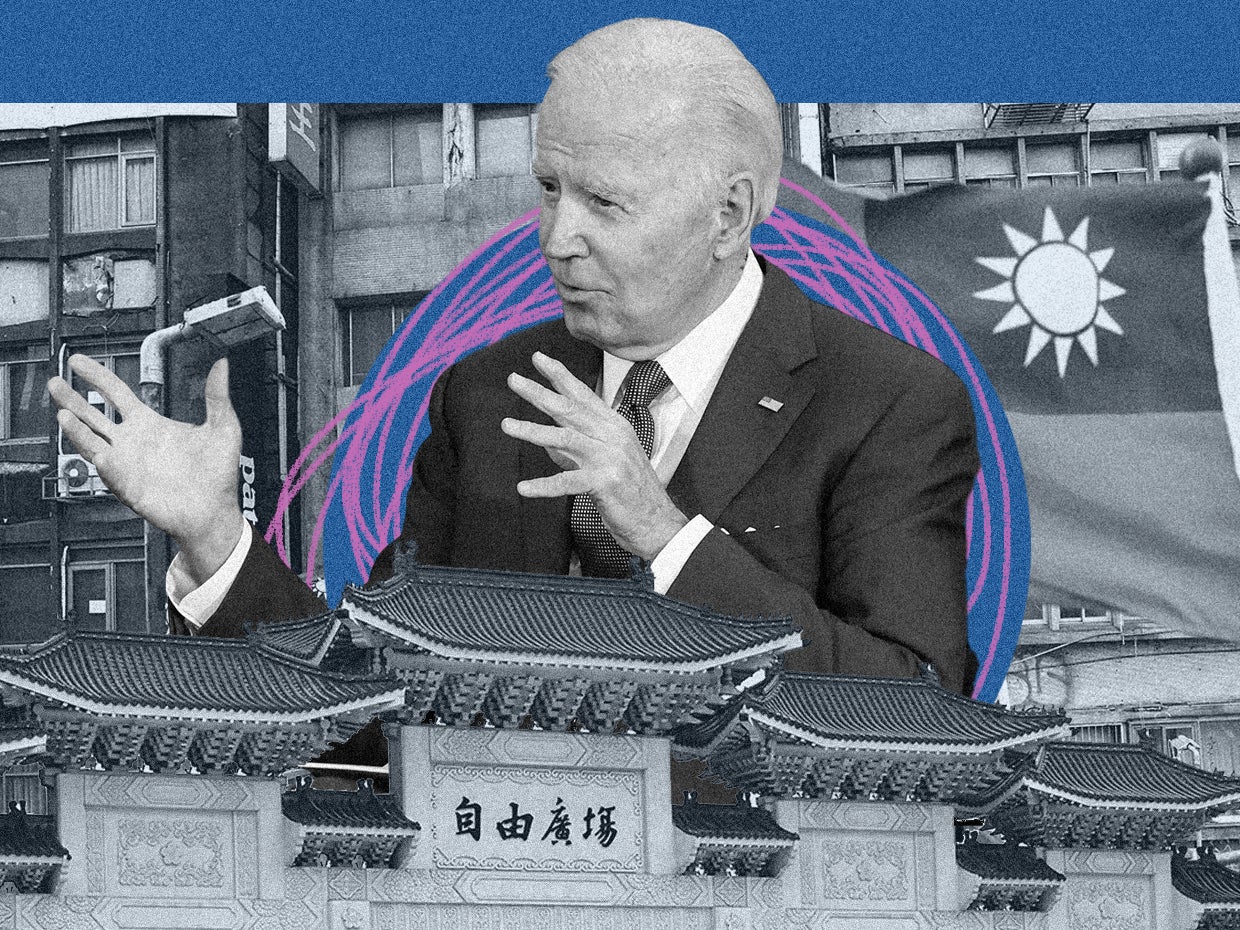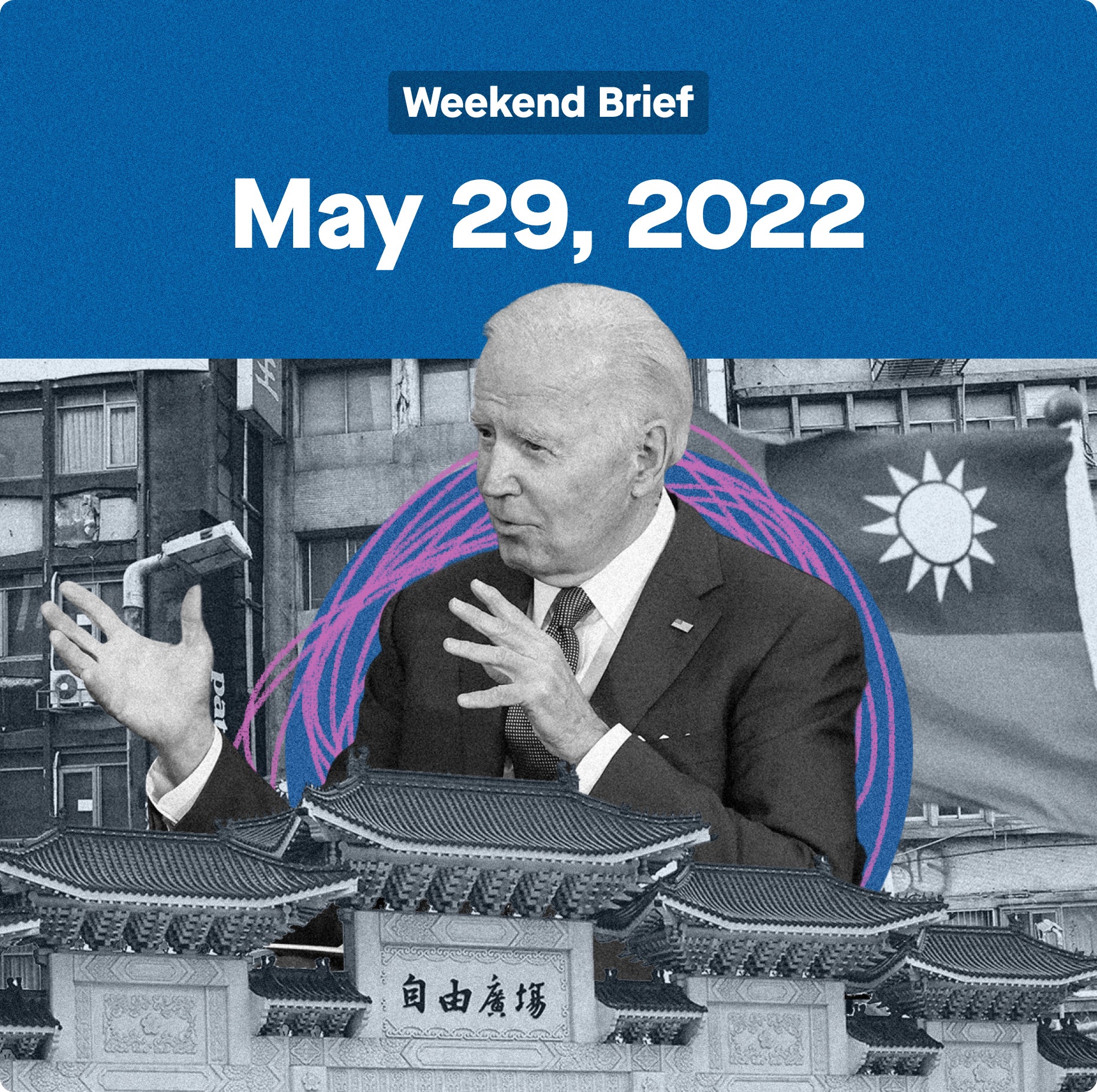✦ Biden’s trip to Asia



Hi Quartz members,
A quick programming note: The Forecast is off this weekend and will be back next Sunday.
US policy toward Taiwan has long been defined by “strategic ambiguity,” a deliberate vagueness on how it would respond to military aggression against the island by China. But a recent series of pronouncements by president Joe Biden—the latest came this week when he said the US would militarily intervene if China attacked Taiwan—seems to have put strategic ambiguity on shaky ground. (White House aides walked back the comments, which Biden made in Japan during his first trip to Asia as president.)
Many comparisons have been drawn between Russia’s invasion of Ukraine and the possibility that China could attack Taiwan to force “reunification”—with some analysts arguing that if the former succeeds the latter could become more likely. Less discussed is how strategic ambiguity factors into both the Russia-Ukraine and China-Taiwan dynamics, and whether ambiguity can survive growing US-China competition.
Let’s start with Russia and Ukraine. The West’s policy has arguably long been a form of strategic ambiguity: In 2008, NATO promised to eventually welcome Ukraine into the Western defense alliance, but didn’t say when. More than a decade on from NATO’s promise, Ukraine still hadn’t been granted membership.
Late last year, Putin began amassing a significant number of troops on Ukraine’s borders and Washington shifted to tactical clarity. It preemptively shared declassified intelligence as part of a wider information campaign aimed at deterring a Russian invasion and made clear what it would and wouldn’t do. (Yes to sanctions and aid to Ukraine; no to troops on the ground and a no-fly zone.)
Now let’s turn to China-Taiwan. This week was the third time Biden has shown an apparent lack of ambiguity, and each time the White House has followed up by saying Washington’s policy on Taiwan remains unchanged. What has changed are China’s military capabilities, which have grown substantially.
And as the US seeks a bigger role in the Indo-Pacific, the calculus that has long defined the status quo in the Taiwan Strait could change, too. The big question for the US is whether ambiguity or clarity is more effective as a deterrent. On that, no one is entirely clear. In either case, US diplomatic posture is only one piece of the puzzle. As Wang Shushen, a Taiwan studies researcher at the state-backed Chinese Academy of Social Sciences, wrote this week (link in Chinese), “What ultimately determines the direction of the Taiwan Strait is not ambiguity or clarity, but will and strength.”
The backstory
- Mutual defense treaty. From 1955 through 1979, the US and the Republic of China, as Taiwan was formally called, had an agreement that promised mutual aid to fend off “armed attack and communist subversive activities.” But as part of the normalization of diplomatic ties with the People’s Republic of China in the 1970s, the US exited this agreement (pdf). The Taiwan Relations Act governed US-Taiwan ties from there, and began the era of “strategic ambiguity.”
- Conditional clarity. With a policy that has “ambiguity” in the very name, it shouldn’t be a surprise that experts don’t entirely agree about what’s being left ambiguous. One interpretation that supports the White House’s “nothing to see here” stance is that the US has always been committed to aiding Taiwan militarily in case of an unprovoked move by Beijing, i.e. something it does even if Taiwan does not make any swings in the direction of seeking independence. The idea is that maintaining Taiwan’s peculiar political limbo is the most stable outcome for everyone concerned.
- US-Taiwan military ties. The US continued arm sales for defense to Taiwan after officially beginning ties with China. In April, the US State Department approved the sale of $95 million in military equipment to Taiwan, the third such sale since Biden became president.
History interlude
In May 2001, then-US Senator Joe Biden wrote an op-ed for the Washington Post criticizing president George W. Bush for the same sort of misstatement on Taiwan that Biden himself made this week. Bush had said he’d defend Taiwan if attacked with “whatever it took.” Biden wrote:
“Where once the United States had a policy of ‘strategic ambiguity’—under which we reserved the right to use force to defend Taiwan but kept mum about the circumstances in which we might, or might not, intervene in a war across the Taiwan Strait—we now appear to have a policy of ambiguous strategic ambiguity. It is not an improvement… [The president’s] inattention to detail has damaged U.S. credibility with our allies and sown confusion throughout the Pacific Rim. Words matter.”
Indeed, they do.
What to watch for next
- Russia and Ukraine. Will Russia gain any territory? How badly damaged is its economy? How long can NATO maintain its resolve? The outcome of Russia’s invasion could shape how both China and the US think about Taiwan.
- Taiwan’s elections. If current vice president Lai Ching-te, who China has labeled a separatist, becomes president of Taiwan in 2024, “then the odds of China taking military action against Taiwan will only grow,” writes RAND analyst Derek Grossman.
- Communist Party leadership congress. Xi Jinping is expected to take a third term at the event. Expect a lengthy speech where he lays out his vision for China’s road ahead.
- The Indo-Pacific Economic Framework (IPEF). While Biden’s comments on Taiwan dominated headlines, this week he also announced a new economic “framework” that will shape US engagement in Asia. The 14-country deal does not include China and is not quite a trade deal. It’s largely symbolic and aims to strengthen US alliances and economic cooperation.
One 🇨🇦 thing
Biden has made an effort to revitalize US alliances that were damaged by Trump, as evidenced by his Asia tour and by his willingness to let European leaders like Macron play pivotal public roles on Ukraine. But some of those allies are growing worried about US domestic stability.
This week, Canadian intelligence experts published a report warning that the country faces new threats from a once unlikely source: the US. “The United States is and will remain our closest ally, but it could also become a source of threat and instability,” the report states. It warns of “serious risks of democratic backsliding in the US” and mentions the impact of Fox News on far-right extremists in both the US and Canada.
To truly convince allies that the US can be a reliable partner, Biden will need to do more democracy promotion on the homefront.
Quartz stories to spark conversation
👀 We ordered the same gun used in Uvalde. Here’s how easy it was.
5 great stories from elsewhere
🥊 China’s boxing star. The 28-year-old boxing champion Xu Can, nicknamed “Monster,” was born into a family of pastry makers in southern China. In a profile, Sixth Tone recounts the rags-to-riches story of the one-time world title holder, whose father sold the family bakery and moved to Kunming so Xu could train full-time as a teen. Since then, Xu has punched his way to the top, becoming China’s third boxer to win a professional world title—an achievement he stands poised to reclaim.
🤖CIA-backed holograms. The US government has previously invested in skincare that collects DNA, and augmented reality goggles, with mixed results. Now the CIA’s venture capital firm, In-Q-Tel, is pushing millions of dollars into metaverse research at a Brooklyn hologram studio. The intelligence community has a history of funding consumer goods that might have military applications, The Intercept writes, but some are concerned that this kind of high-tech investment amounts to little more than chasing a fad.
⏳Young at heart? Your chronological age might be 51, but your biological age could be 24. Such was the case with one man in a Wall Street Journal report on research that seeks to measure age by health, and not time. In this developing field, scientists agree that biological age is significant, but disagree on how to measure it, and whether it can predict longevity. Even so, companies are looking to cash in on calculating a “credit score for your body.”
🐈Cats get a curfew. During the pandemic in Iceland, cats were in high demand and short supply. But in a post-pandemic world, the tiny apex predators are facing bans in towns across the country, from Akureyri to Húsavík. Hakai Magazine tells the story of how the cuddly creatures are an environmental threat to birds, whose neighborhood presence, according to one study, makes people as happy as money.
😘Hey there ;) “E-pimping,” or the procurement of customers for online sex services, is a growing, global industry that relies on hired chatters to close sales. The New York Times spoke to Jayson Rosaro, a former poncho importer-turned-OnlyFans-entrepreneur, to learn about online hustling and the art of the DM in a business where sexters get paid as little as $3 an hour.
Thanks for reading! And don’t hesitate to reach out with comments, questions, or topics you want to know more about.
Best wishes for an unambiguously good weekend,
—Mary Hui, reporter
Additional contributions by Tripti Lahiri and Lila MacLellan.